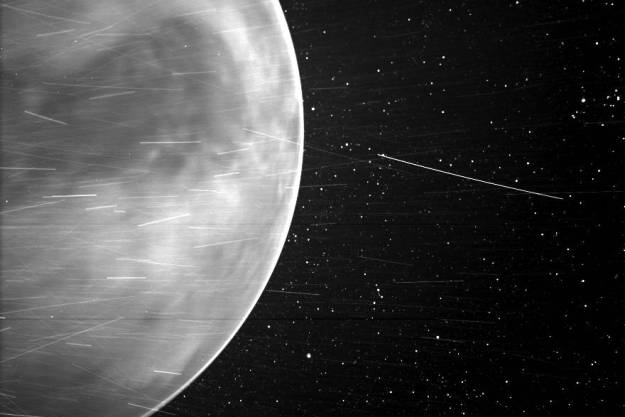The Parker Solar Probe blasted off from Space Launch Complex 37 at Cape Canaveral Air Force Station in Florida early Sunday morning, aboard a United Launch Alliance Delta IV Heavy rocket, on a remarkable mission. Its ultimate destination: the edge of the corona, the atmosphere of the sun, where it will make the first in-situ measurements there. The goal? To uncover crucial details about the origins of the solar winds, which go on to bombard Earth and pose a major challenge to our spacecraft and communications systems.
Oh, and to unravel a giant mystery about the sun’s temperature, too.
“The corona is very hot, millions of degrees Centigrade, and we don’t know why,” Stuart Bale, a University of California, Berkeley professor of physics who was one of the four principal investigators responsible for developing the FIELDS suite of instruments on board the probe, told Digital Trends. “The sun itself is a relatively cool — 6,000-degrees Celsius — star. Somehow this cool star makes the corona very hot. This hot corona then escapes the sun’s gravity and becomes the ‘solar wind.’”
The launch was delayed by a day to Sunday morning following a few technical concerns on Saturday, detailed on Twitter by ULA president and CEO Tory Bruno:
See you tomorrow. Bird is good. Had to recycle a couple of times. One for a telemetry issue. Another for an automated trip on a regulator. Ran out of time in the window. We want this to be perfect.
— Tory Bruno (@torybruno) August 11, 2018
Sunday’s launch was flawless, however, a fiery arc of jet fire from the ULA rocket cutting up through the night sky at 3:31 am. “I’m grateful to our many partners who made today’s launch a success!” wrote NASA administrator Jim Bridenstein on Twitter.

As you might imagine, a mission that essentially involves flying into the sun (or, at least, to its periphery) involves dealing with a fair amount of heat. While the Parker Solar Probe is equipped with a heat shield for protecting its various onboard sensors, it will nonetheless have to contend with temperatures almost hot enough to melt steel.
Bale has been working on the project since 2009 (“a long time,” he said), and everything since then has been building up to this point. Should all go according to plan, the instruments he helped develop will be used for measuring electric and magnetic fields in the corona and solar wind, before relaying this information back to Earth.
So spare a thought for the sleep-deprived folks at NASA HQ when you’re out enjoying your Sunday afternoon. And if, through some miracle, you happen to later spot a tiny solar probe traveling at 340,000 mph (note: unless you have Superman-level vision, this is extremely unlikely) make sure to wish it good luck on its journey.
Editors' Recommendations
- Remarkable imagery shows NASA probe as it’s hit by a solar storm
- Telescopes turn on Parker Solar Probe’s latest approach to the sun
- NASA probe becomes first in history to ‘touch’ the sun
- Our sun is the star of this awesome set of new stamps
- Watch NASA unfurl a huge solar array at the space station

